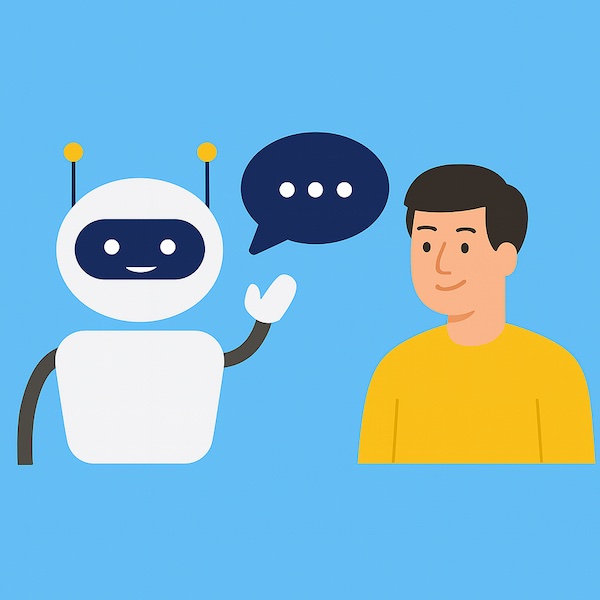
Chatbots Versus AI Agents
Explaining The Differences

Explaining The Differences
In the evolving world of digital interaction, two tools have emerged to help businesses automate communication and boost productivity: chatbots and AI agents. While they might seem similar at first glance, they serve distinct purposes and offer different capabilities.
A chatbot is a computer program designed to interact with users, typically through a website or messaging app. These digital assistants rely on predefined rules, decision trees, and scripted responses to answer questions or perform tasks.
The concept dates back to 1964 with ELIZA, a pioneering program that mimicked a psychotherapist. Today's chatbots are ideal for:
However, chatbots are limited in their ability to understand nuance or context. They follow rigid flows and don't adapt or learn from user behavior. Think of them like vending machines - reliable, but not flexible.
An AI agent is an advanced assistant powered by large language models (LLMs). These systems understand and generate language, allowing them to support tasks like writing, coding, analyzing business data, and more.
AI agents can:
Think of an AI agent like a personal chef - versatile, creative, and able to tailor output to your needs with minimal setup.
Here's a side-by-side comparison:
| Feature | Chatbot | AI Agent |
|---|---|---|
| Conversational Style | Scripted, rule-based | Natural, flexible |
| Context Understanding | Limited | Strong |
| Training Required | Extensive | Minimal |
| Adaptability | Static | Learns and evolves |
| Best Use Case | Customer-facing FAQs | Employee-facing workflows |
| Setup Time | Long | Short |
| Data Handling | Basic | Structured + Unstructured |
Today, the smartest strategy for most organizations is a hybrid approach. Chatbots provide consistency and control for scripted interactions. AI agents offer flexibility and depth for more complex or creative tasks.
As technology continues to evolve, the line between chatbots and agents may blur. But for now, the best results come from knowing how - and when - to use each tool effectively.
Bottom line: It's not about choosing one over the other. It's about using both - together - to create better, more intelligent experiences.
Do you like our philosophical approach to business? Drop us a line. We look forward to working with like-minded people and companies.